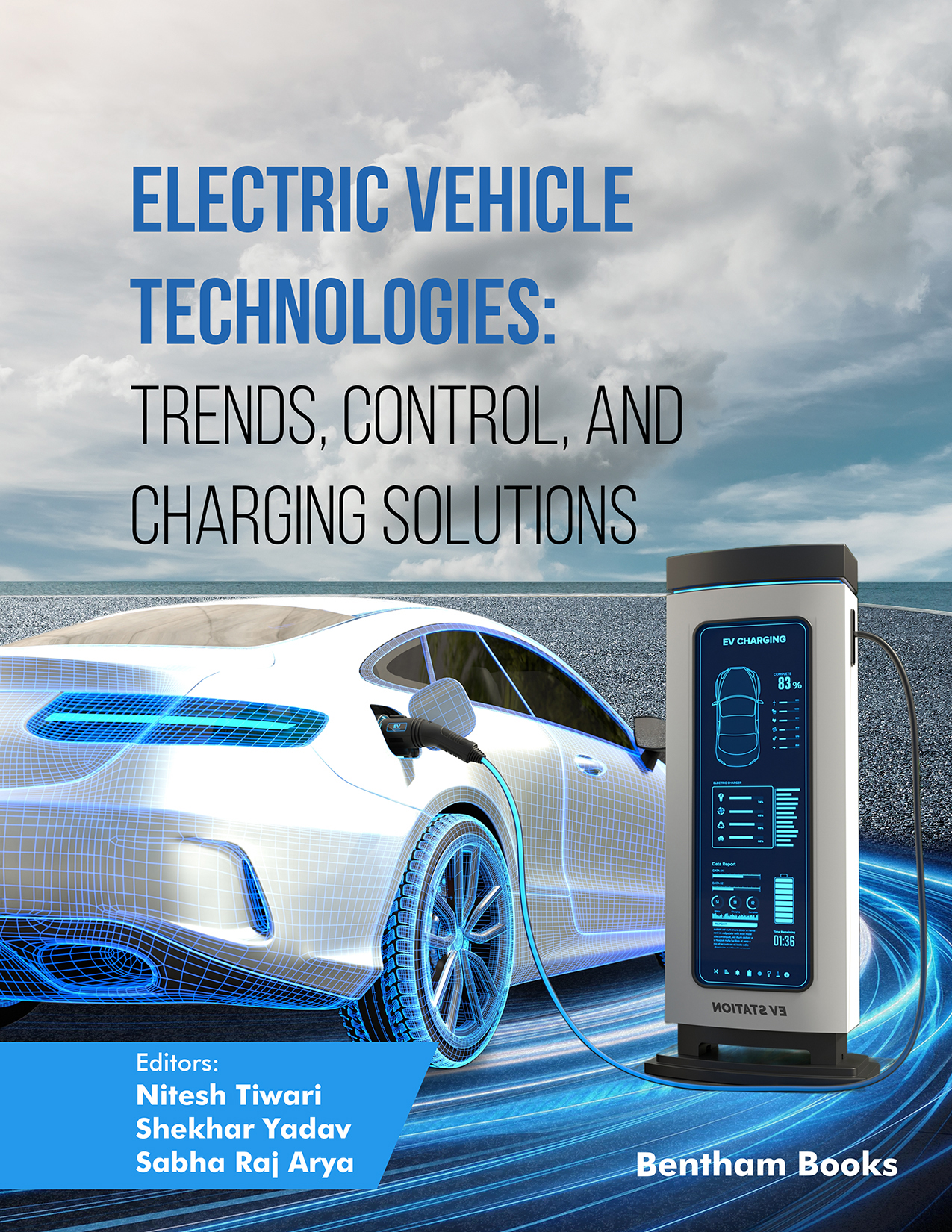The rapid evolution of electric vehicles (EVs) and the increasing emphasis on sustainability have driven research in various fields, including solar energy integration, power electronics, and autonomous systems. This compilation of chapters offers a comprehensive review of the emerging technologies and methods that are shaping the future of electric vehicle (EV) systems. From advancements in solar energy harnessing to innovative control techniques for motor drives, this book explores the diverse landscape of research and development in EV technology, providing insights into both current trends and future opportunities.
Chapter 1, “A Review of Emerging Research Trends and Opportunities in Harnessing Solar Energy for Electric Vehicles,” sets the stage by discussing the growing role of solar energy in powering electric vehicles. This chapter outlines the potential benefits, challenges, and opportunities of integrating solar power with EV systems to create a more sustainable transportation solution.
In Chapter 2, “Introduction to EV Motors,” readers are introduced to the various types of motors used in electric vehicles, including their construction, operation, and performance characteristics. Understanding these motors is crucial to developing efficient EV systems that can meet the increasing demands for performance and energy efficiency.
Chapter 3, “Introduction to Power Electronics Converters,” explores the critical role that power electronics play in the operation of electric vehicles. This chapter provides an overview of the key converter technologies used in EVs, which are essential for controlling the power flow between the battery, motor, and other components.
The focus shifts to motor control in Chapter 4, “Field Oriented Speed Control of BLDC Motor for Practical Drive Cycle,” where advanced techniques for controlling Brushless Direct Current (BLDC) motors are discussed. This chapter emphasizes how these techniques contribute to the efficiency and performance of EVs during real-world driving cycles.
Chapter 5, “Phase Shifted Full Bridge Converter-based Battery Charger for Fast Charging of Electric Vehicles,” addresses the importance of fast and efficient charging solutions for EVs. The chapter delves into phase-shifted full bridge converters and their application in optimizing battery charging times without compromising system safety or longevity.
In Chapter 6, “An Adaptive Passivity-based Controller for Battery Charging Application: The Lagrangian Framework,” a novel controller is introduced that improves the adaptive charging of EV batteries. The chapter emphasizes the benefits of the Lagrangian framework in enhancing battery performance and overall energy management.
Chapter 7, “Vehicle-to-Grid (V2G) Battery Charging System for Electric Vehicles,” explores the potential of bidirectional charging systems, enabling EVs to not only charge from the grid but also contribute energy back to it. This chapter discusses the technological, economic, and regulatory challenges and opportunities of V2G systems in supporting grid stability and energy sustainability.
In Chapter 8, “IoT Based Floor Cleaning Electric Vehicle Robot with Live Streaming Camera,” the application of IoT and robotics in EV technology is highlighted. This chapter presents the design and operation of an autonomous floor-cleaning robot, showcasing how these innovations can be integrated into the broader field of electric vehicle development.
Chapter 9, “Hardware Design and Modelling of Solar-Based Wireless Electric Vehicle Charging Station,” focuses on the integration of solar energy and wireless charging technologies. The chapter presents a hardware design for a solar-based charging station, demonstrating how these technologies can be combined to offer more sustainable and efficient EV charging solutions.
Lastly, Chapter 10, “Hardware Design of Electric Bicycle with Solar Panel,” examines the design considerations and challenges in developing solar-powered electric bicycles. This chapter underscores the importance of solar energy in supporting the growing demand for sustainable urban mobility solutions.
Together, these chapters provide a holistic view of the current state and future directions of electric vehicle research, emphasizing innovative approaches to energy generation, storage, and management. As the world moves toward cleaner, more efficient transportation solutions, the research presented here offers valuable insights into the technologies that will shape the future of electric mobility.
Nitesh Tiwari
KIPM College of Engineering and Technology
Gorakhpur (UP), India
Shekhar Yadav
Madan Mohan Malaviya University of Technology
Gorakhpur (UP), India
&
Sabha Raj Arya
Department of Electrical Engineering
Sardar Vallabhbhai National Institute of Technology
Surat, India

